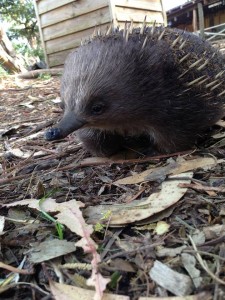This little critter is certainly very coot.... say hello to this sweet baby Eastern Barred Bandicoot!
Unfortunately for this little one he was brought in by someone's pet cat but luckily even being so tiny he was not badly injured and has gone into care.
We have had quite a spate of native animals brought in to the Sanctuary due to cat attacks so we thought it might be good to do a post aboutresponsible pet ownership relating to cats.
CAT FACTS:
A domestic cat will kill, on average, 16 mammals, 8 birds and 8 reptiles a year. Feral cats (with an estimated 1.2 million feral cats in Tasmania) will kill on average an astonishing 3.6 million small animals, lizards, and birds every day.
Here are a few things to think about if you have a pet cat and want to protect wildlife too!
1. Have your cat desexed. A desexed cat lives longer and is less territorial. It will wander, fight and mark its territory less, and generally makes a better pet. Desexing prevents unwanted litters of kittens that contribute to stray and feral cat populations, and to the ongoing destruction of native wildlife.
2. Identify your cat as a pet. Cats that are lost, and are micro-chipped or have a collar with identification, can be identified and returned safely home to their owners.
3. Never dump your unwanted kittens or cat. Dumped cats can become feral and will prey heavily on wildlife as a food source. Unwanted animals should be given to a good home or humanely euthanased. Contact your local veterinarian for assistance.
4. Keep your cat from roaming. Cats kept indoors in a special ‘cat enclosure’ won’t prey on wildlife. And you will enjoy their company more too! Pet cats that are prevented from roaming are protected from injury, snake bite and from catching diseases from feral cats. Some people keep cats confined only at night. This will reduce their impact on nocturnal wildlife, but not on wildlife such as lizards and birds that are active during the day. Cats, especially those that roam, are the host for a blood disease called Toxoplasmosis, which can affect wildlife and is very harmful to humans and to livestock. Keep your cat confined both day and night if possible.
Here is a recent article that was in the Mercury on feral cats - http://www.themercury.com.au/news/tasmania/feral-pests-lurk-in-undergrowth/story-fnj4f7k1-1226746329348










